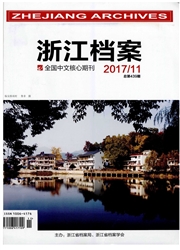

 中文摘要:
中文摘要:
2010到2014年间发现的明代清水江文书,全是来自于明代国家的内地边疆或者"楚边"地区;文书从三个方面细微地展示出内地边疆少数民族地区社会经济生活:屯田制度下长成起来的卫所、府县与土司的二元乡村社会结构;苗田、屯田、民田构成的乡村经济结构及民田化发展的趋势;田地纠纷与建场开市的乡村社会日常生活。
 英文摘要:
英文摘要:
Qingshuijiang documents in Ming Dynasty found during 2010 to 2014 are all from Ming inland border area or "Chu Border"regions. These documents revealed the social and economic lives of inland frontier minority nationality regions finely from three aspects: the rural society dual structure combined by Weisuo administrative system,prefectural system and chieftain system,which grew up influenced by reclaimed-field system; the rural economic structure made up of Miao-field,reclaimedfield and folk-field,and the tendency toward folk-field; rural society daily lives of land disputes and building markets.
 同期刊论文项目
同期刊论文项目
 同项目期刊论文
同项目期刊论文
 期刊信息
期刊信息
